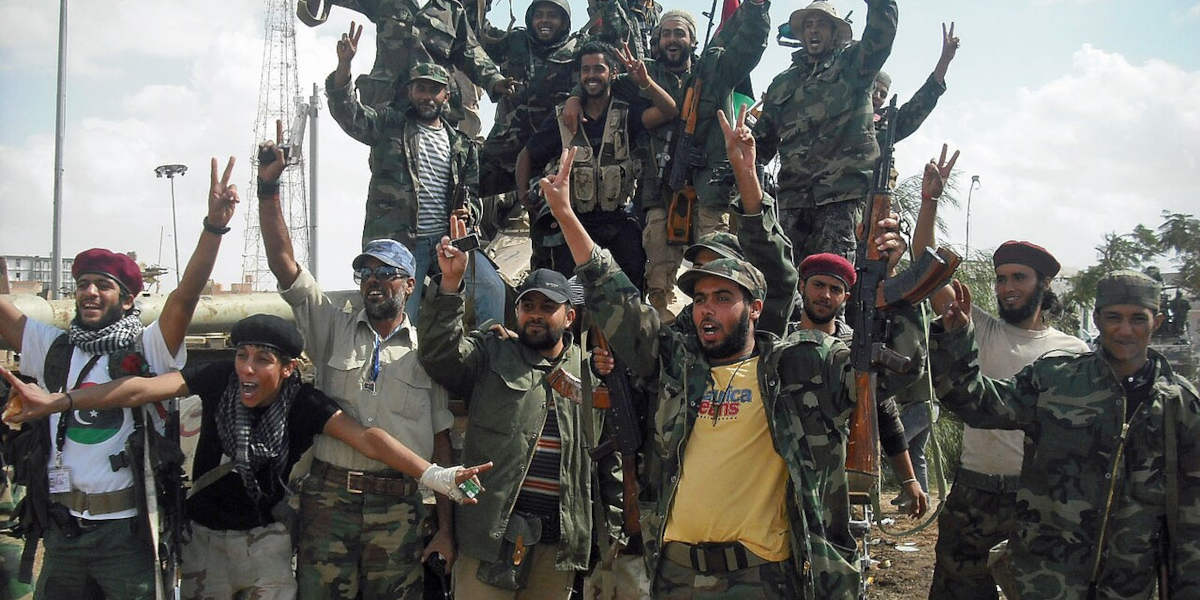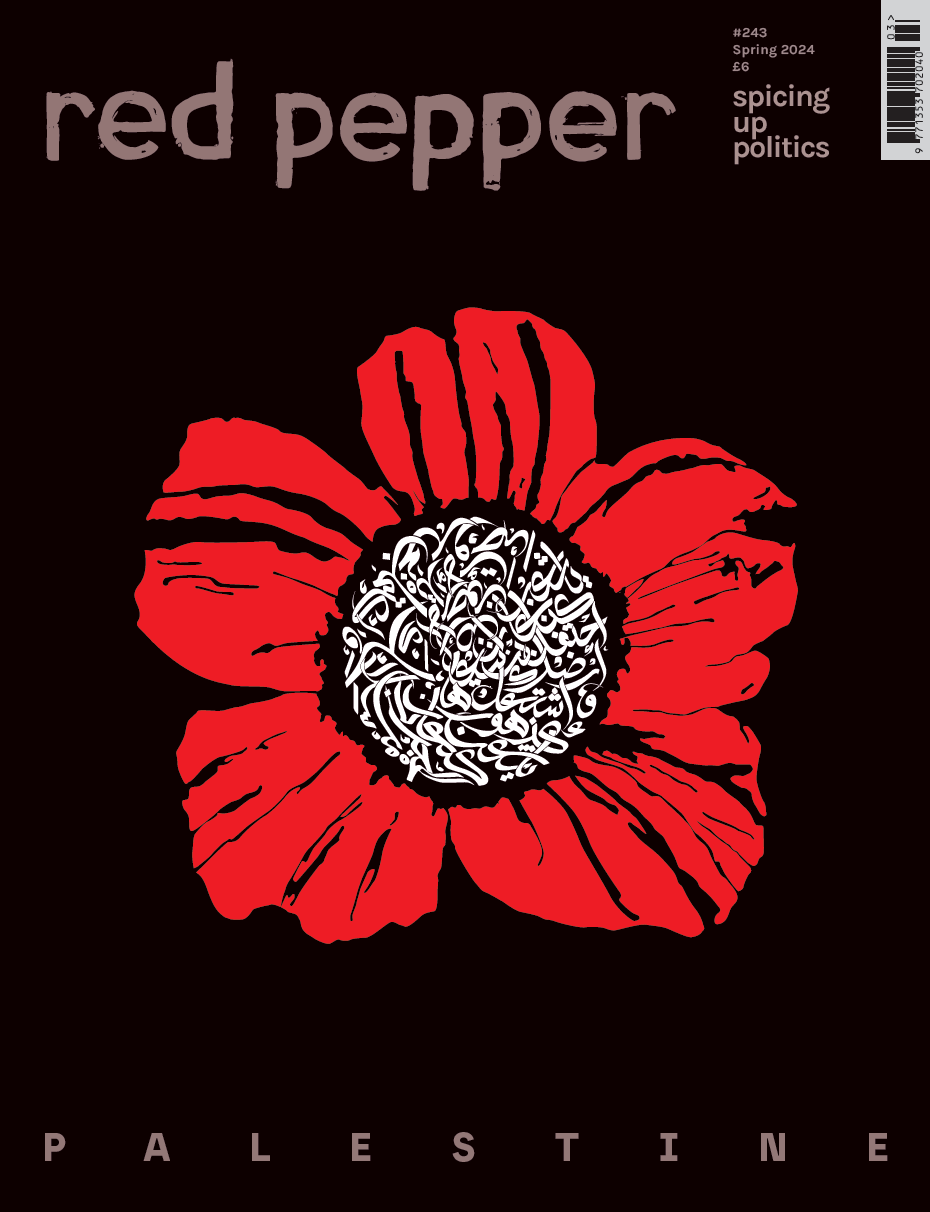This is a sequel to my June 2011 article, ‘After the spring’, on the upheavals in the Arab world. It is an article that has been painful to write, because it brings bad tidings and offers a pessimistic analysis of the upheavals, at least in the short term, in a number of Arab countries. The outcomes and potential outcomes of these uprisings have also acquired new, very significant dimensions. These include a complex entanglement with the accelerated preparations for a possible attack on Iran, and a poisonous, sectarian aspect that could have the consequence of ripping Syria and the Middle East apart.
But I am also relieved to report that it is not all bad news. The Egyptian people’s uprising is far from over and the workers, students and women activists are still engaged in a relentless struggle to remove military rule and gain genuine democratic rights, despite the Islamic organisations’ efforts to dampen popular anger and demands. In Tunisia, the trade unions and left organisations are still strong and engaged in political and social struggles on a daily basis. They have also succeeded in securing a significant voice in parliament and are opposed to the pro-NATO direction of the newly elected Islamic government.
In Bahrain, the heroic popular movement is still defying the ruthless royal family and the Saudi tanks. Hundreds of thousands of people in Yemen still control the streets despite Saudi and US efforts to crush the uprising. And it might go unreported in the media, but there is a strong protest movement in Iraq against the continued US presence and regime corruption. Anti-regime protests in Jordan, Morocco and Saudi Arabia are similarly ignored.
Last year I reported that, faced with mighty uprisings and serious threats to the very foundations of the assorted dictatorships from the Atlantic to the Gulf, the counter-revolutionary forces had responded ferociously. This included the Saudi ruling family sending its tanks into Bahrain to crush the uprising and NATO sending its bombers and special forces to back the various militias in Libya to overthrow Gaddafi’s dictatorship and install a weak, fragmented political order more to its liking. I also suggested that there were attempts to repeat the Libyan scenario in Syria, a country partly occupied by Israel.
Events have since demonstrated a politically astute and highly coordinated response from the Arab rulers and their imperialist backers. They overcame a period of shock, confusion and hesitancy and, for the time being at least, have succeeded in wresting the initiative from the broadly secular left, thwarting its efforts to lead the struggle in a democratic and anti-imperialist direction.
Faced with oblivion, the ruling classes have thrown their weight behind one of the currents that has been very active in the uprisings threatening their rule: the Islamic organisations. Overnight, the secular, democratic, anti-imperialist forces have a formidable force to contend with, a force that has influence and popular support, a force from within that was part and parcel of the tidal waves that filled the streets of Tunisia and Egypt and brought down two of the region’s formidable dictators.
That broad alliance of the secular and religious, which spontaneously coalesced in powerful mass gatherings in Tunis and Cairo, has now fragmented. The leaderships of the larger Islamic organisations, including the Muslim Brotherhood and the Salafis, have accepted co-option and power sharing with the military wings of the old regimes, backed by Saudi and Qatari petro-dollars, religious fatwas, TV network al-Jazeera and US strategic assistance. In Libya, even the old al-Qaida terrorists have been co-opted, having graduated from the torture cells of Guantanamo Bay. They have been sending fighters to Syria to link up with some of the groups there.
Conspiracy theorists
It is useful at this stage to engage with the conspiracy theories, widely circulating in the Middle East, suggesting that the so-called ‘Arab Spring’ was all part of a plot by imperialists to absorb mass hatred of the dictators while consolidating their grip on the region. The mainstream media tend to dismiss references to the motives behind US and NATO interventions and interference in the region as conspiracy theories. They would like us to believe that NATO’s intervention in Libya, for example, is based solely on humanitarian impulses rather than being part of its quest to protect its interests in the region.
While strongly rejecting the conspiracy theories, I think we should pay closer attention to the manner in which NATO countries and their allies in the region, especially the Qatari and Saudi dictatorships, have reacted, the element of pre-planning that has gone into intervening in the spontaneous uprisings and the militarisation of the protests in Libya and now in Syria.
One aspect of the US intervention that has attracted attention is the formation of a group of US experts prior to the uprisings to look into possibilities of political change in Egypt and other republics in the region but excluding Saudi Arabia and other ‘stable’ monarchies. The secret body was formed on Barack Obama’s orders in January 2010. Wikileaks documents and the New York Times have also revealed extensive support for some Egyptian opposition groups dating back to the 2005 Bush administration. These include the well-known 6 April opposition movement. US support for leaders of some of the groups focused on training them in the use of social networking sites such as Facebook and Twitter.
The conspiracy theorists are growing in the Arab world following the NATO intervention in Libya, the survival of military rule in Egypt, the installation of another US/Saudi-backed figure in Yemen, the election of an Islamic group in Tunisia that used to claim to be anti-imperialist but is now cooperating with NATO, and the arming of the Free Syrian Army by a NATO member, Turkey. But why would the US destabilise Mubarak’s, Bin Ali’s and other loyal regimes? The conspiracists’ answer is that these countries were ripe for revolution and the US pre‑empted it in order to engineer events in its favour.
Conspiracy theorists often elide the consequences of an event and its causes. So they suggest that the 9/11 terrorist attacks were engineered by the US because they were used to justify the invasions of Afghanistan and Iraq; therefore they see the NATO intervention in Libya and the continuing military rule in Egypt as proof that the US was behind the Arab uprisings. The fact that the conspiracists are wrong does not mean that there is not some truth underlying their assertions. Understanding this helps us better to understand the divisions that have emerged, on the left and elsewhere, particularly in relation to Libya and now Syria.
Two problems
There are two problems, in particular, to tackle. To recognise one but not the other is at the root of the divisions regarding Syria.
The first problem that still gets glossed over by some is that the Arab states are ruled by an assortment of ruthless and corrupt dictatorships that are intensely hated by an overwhelming majority of their people. Free thinkers, trade unionists, women activists and democrats of all hues have been the victims of these regimes for many decades. Torture, imprisonment, execution and exile are the means of silencing the opposition and the people at large. Resistance to such oppression has been going on for many decades too. Though unique in their scope and scale, the Arab uprisings of the past year are not new in their motives.
Glossing over that aspect leads to suggestions that the struggle for democracy and freedom in Arab countries such as Libya or Syria is but a manifestation of imperialist conspiracies, and that only the struggle of the people in Saudi Arabia or Bahrain, for example, is legitimate.
However, there is a second equally important and integral problem to recognise in trying to better understand the momentous events in the Middle East and North Africa. This is that every one of the Arab state structures, despite some modifications following independence or periods of conflict with imperialist powers, is the product of colonial rule, followed by neo-colonial, imperialist domination.
Not to clearly recognise this second aspect leads to the portrayal of all conflicts and events in the region as the product purely of internal contradictions and schisms. This absolves the imperialist powers of any involvement or responsibility for at least some of the conflicts.
The Islamic movements
In looking at the region’s biggest Islamic movement, I wrote in my previous article that ‘Despite the fact that the younger members of the [Muslim] Brotherhood were part of the coalition of groups that sparked the initial wave of protest marches, most of the leadership was ready to reach a deal with Mubarak’s regime, and did so publicly after Mubarak appointed his place-man Omar Sulaiman as vice president. This caused a major revolt in the Brotherhood’s ranks and it had to make a hasty retreat.
‘The Brotherhood has always acted as an expression of some of the poorest people’s demands and often confronted the central and local authorities. However, this role was coupled, since the early 1970s and Sadat’s era, with that of acting as the lid on the people’s mounting anger against the fabulously rich, US‑pampered ruling circles.’
The Brotherhood and the Salafis in Egypt have their equivalents in much of the Arab world. Though the presence of the Brotherhood in Iraq, for example, was weaker and represented by the Islamic Party, which cooperated with the US occupation, Salafi-style groups mushroomed in parts of Iraq and engaged in terrorist attacks against Shia communities. In Syria the Brotherhood has a big following and has fought against the secular regime for decades.
Aside from its pro-capitalist ideology, one important aspect of the Brotherhood and some other Islamic movements is that for four decades after the second world war they were seen by the west and the Arab regimes as useful allies against the ‘communist infidels’. Hamas in Palestine was originally financed by the Saudis, and Israel turned a blind eye to its initial rise, because it was seen as counter to the secular and left-leaning Fatah and Popular Front and the Democratic Popular Front. Following the post-uprising shift in the balance of forces in Egypt and the ascendency of the Brotherhood, there is now intense political debate within Hamas as to whether they should align themselves with the Brotherhood in Egypt and Syria.
Qatar is playing a leading role in financing the Brotherhood and it appears that it has promised Hamas it will finance the rebuilding of Gaza if Hamas opposes the Syrian regime, withdraws its headquarters from Damascus and breaks with Iran. Turkey has also engaged with the Brotherhood and Hamas, and has been providing active support for the Syrian Brotherhood, arming the Free Syrian Army and providing it with logistical support. Saudi Wahabi religious leaders close to the ruling family are much closer to the Salafis in their very rigid and ruthless outlook on social issues.
Amid the conflicts and popular upheavals, the biggest danger facing the democratic, anti-imperialist forces is that the Saudi and Qatari royal families, backed by the US, have been aggressively accelerating a racist and sectarian campaign against Iran and the Arab Shia communities in the region. In this they have succeeded in recruiting most of the leaders of the Islamic organisations in Egypt, Libya, Tunisia, Syria, Lebanon, Jordan, Iraq and, it appears, some Palestinians too. This campaign chimes with Israeli and US threats to attack Iran. Syria is seen as the main obstacle to unifying the region’s states against Iran and Hizbullah in Lebanon.
Sectarian campaign
The sectarian campaign is such that one of Syria’s leading anti‑regime clerics has appeared on a Saudi TV station and threatened to ‘kill and mince the corpses’ of the ‘Alawite supporters’ of the regime. And while the Syrian regime has engaged in the murder of peaceful protesters, secular women, Christians, Kurds and other minorities have been targeted by al‑Qaida type terrorists in Syria.
Syria has become the focal point of all the region’s major problems and contradictions. It is sad to note that the democratic, anti-imperialist organisations that led the peaceful protest movement initially have been eclipsed by the NATO-backed sectarian forces of the Syrian National Council and the Free Syrian Army. There is intense external intervention from Turkey, Lebanon, Jordan and Iraq, with funds from the Saudi and Qatari ruling families, and incessant sectarian input from the Qatari al‑Jazeera news network. Wikileaks has also revealed that US special forces are already operating in Syria.
It is clear that the current alternative to the Syrian dictators, in the absence of a strong unified democratic movement, is bloody sectarian strife, orchestrated by a motley collection of sectarian forces, mercenaries and former regime figures, such as Paris-based billionaire and former vice-president Abdulhalim Khaddam and Saudi-based billionaire and Bashar’s uncle, Rifa’at al-Assad.
The left needs to recognise that imperialist and Saudi-Qatari-Turkish intervention in Syria is not just a danger for the future but has been going on for several years now.










